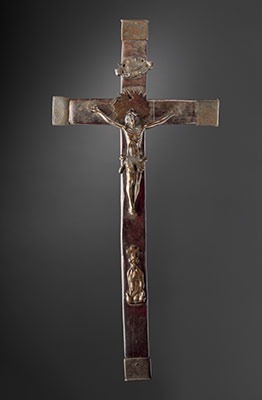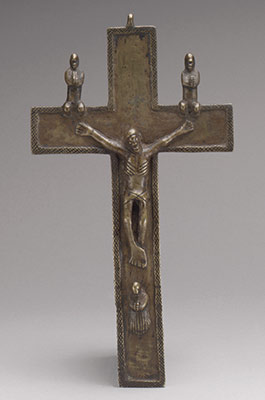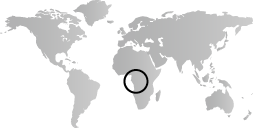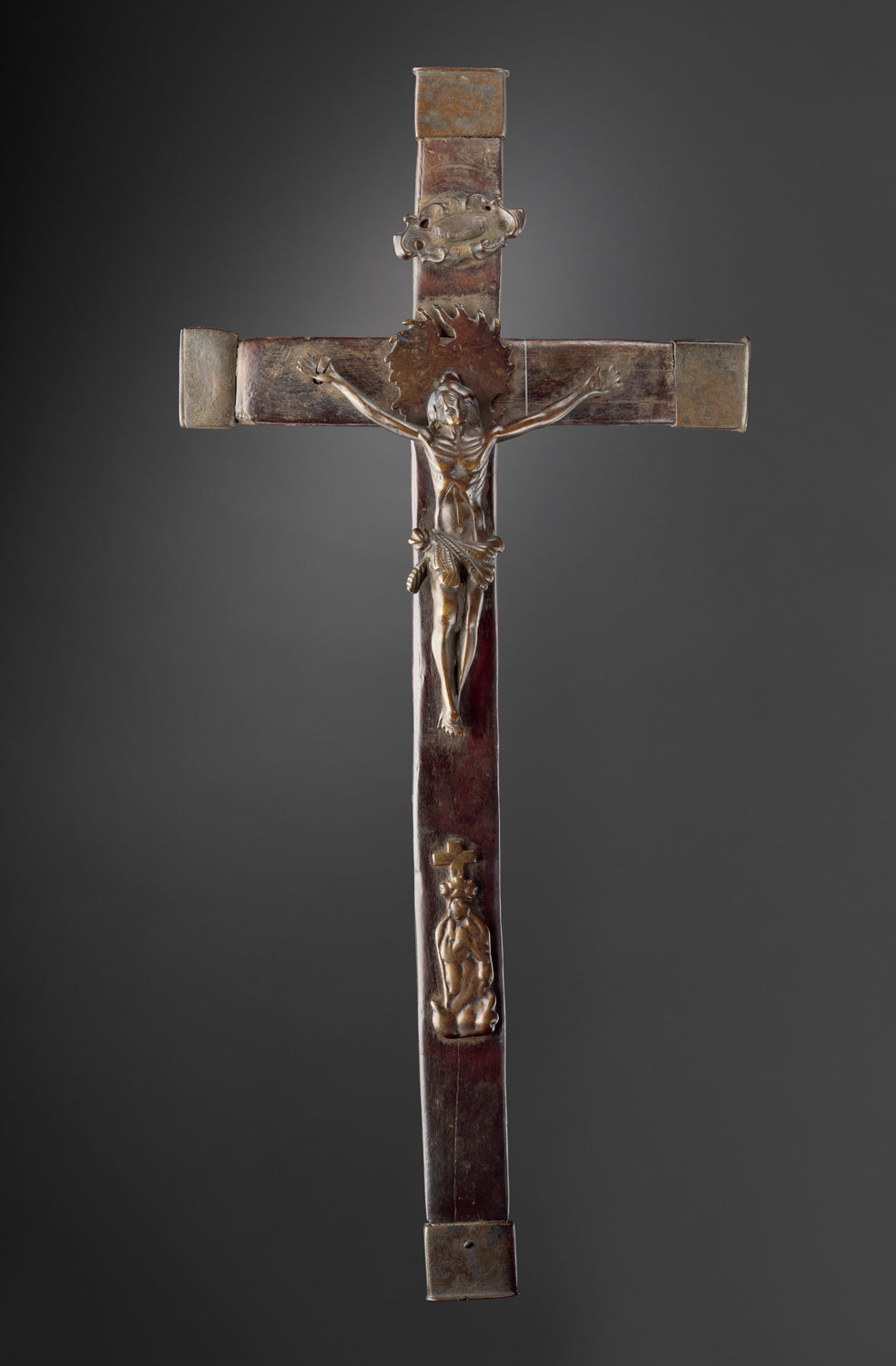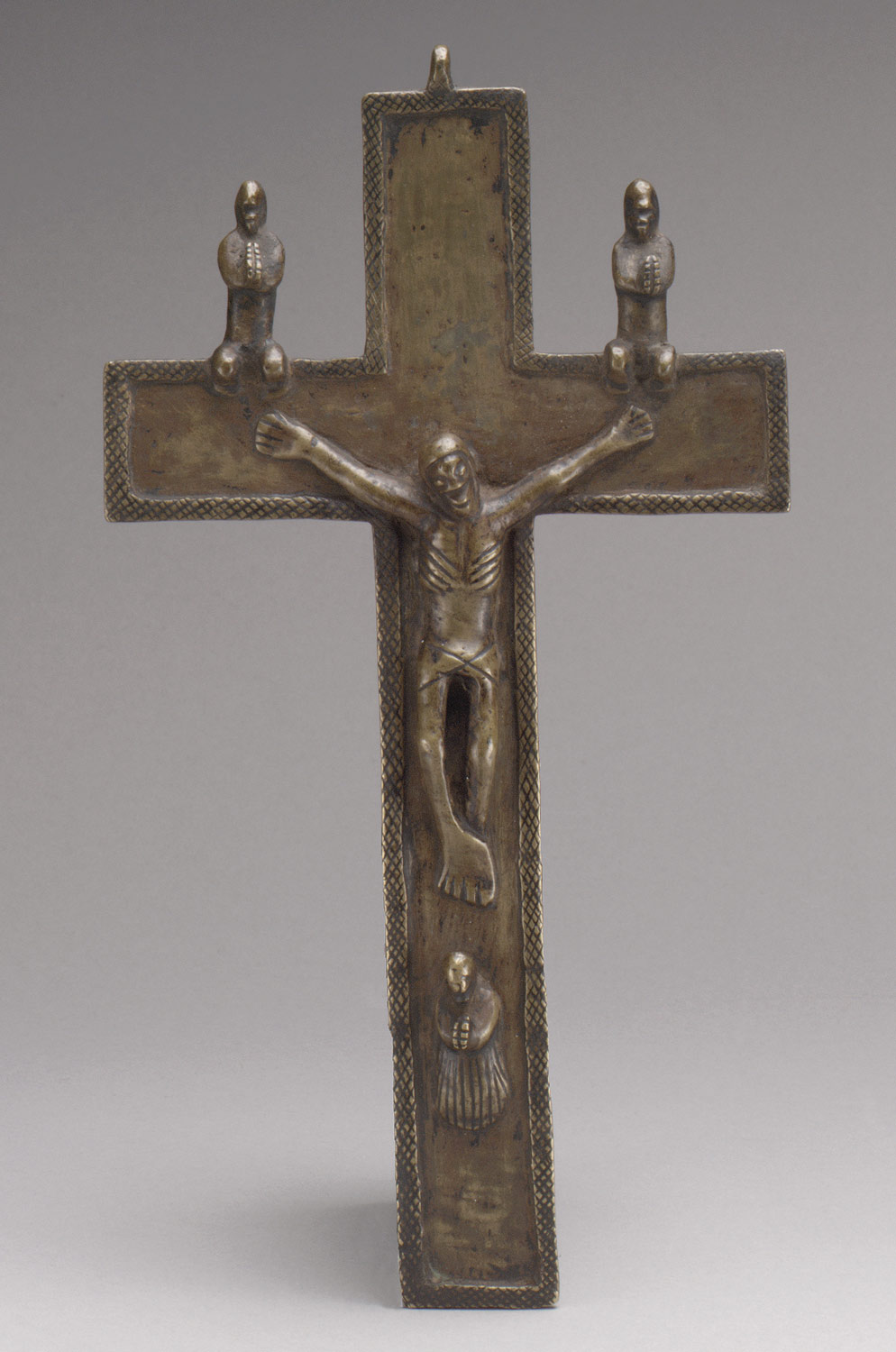The improved use of iron technologies and new trade networks with Europe via the Portuguese lead to the development of larger, more centrally organized states, including the Ndongo and Kongo kingdoms. The expansion of the Kongo kingdom, the largest state in Central Africa, is the result of diplomatic collaboration with Portugal, control of important trade routes, and the wealth of natural resources within the Kongo territory. A historically unique religious, cultural, and artistic syncretism occurs as a result of the early phase of this cordial and primarily equitable relationship to Portugal.
Central Africa, 1400–1600 A.D.
Timeline
1400 A.D.
1450 A.D.
1450 A.D.
1500 A.D.
1500 A.D.
1550 A.D.
1550 A.D.
1600 A.D.
Overview
Key Events
-
1400
In the fertile agricultural area at the mouth of the Congo River, King Nimi a Lukeni capitalizes on the region’s natural resources and location at the intersection of several important trading routes to found the Kongo kingdom. This kingdom subsequently becomes the largest centralized state in Central Africa. From the capital, Mbanza, Kongo kings rule through a system of nobility who tax and control outlying rural provinces. The art of the Kongo kingdom is largely concerned with communication of status and hierarchy. Luxury goods, fiber arts, rare pelts, highly embellished daily objects, and an elaborate system of court rituals distinguish the leadership classes from commoners.
-
1483–1665
The first Portuguese explorer, Diogo Cão, arrives in the Congo estuary at the mouth of the Congo River, encountering the large and complex Kongo kingdom. Initial relations between the Portuguese and the Kongolese are amicable and commercially based. The Portuguese trade metal goods, guns, beads, and fabric for ivory, gold, and salt.
-
1491
The king of Kongo is baptized as João I, establishing Christianity as the state religion and thus fostering ties with Portugal and several other European nations. João I is succeeded by his son Afonso I, who expands the practice of Christianity and is himself an avid scholar, literate in Portuguese. Afonso further solidifies the prosperity of the Kongo kingdom through its status as a leading trading partner to the Portuguese. Royal Kongo artists work within the iconographic repertory of the new faith to produce cast brass crucifixes that blend European prototypes with local aesthetics.
-
1520
A royal Portuguese decree calls for the conversion of the Mbundu peoples of the Ndongo kingdom to Christianity. The Ndongo leadership resist the efforts of missionaries, aggravating Portuguese animosity. Portugal responds with periodic invasions, which culminate in the seventeenth century with their military conquest of the region.
-
1568–1569
The Jaga Wars between the Jaga and the Kongo kingdom erupt after several decades of Kongo raids to feed the Portuguese slave trade. Weakened by similar military conflicts with the Kuba and Teke, among others, the Kongo are forced to rely on heavy reinforcements and support from the Portuguese, thus costing them their political and commercial autonomy. The Portuguese subsequently become more militaristic in their dealings with Kongo traders, building more forts, demanding higher taxes, and exerting more direct control over the Kongo political system, undermining the authority of Kongo leadership.
-
1574–1594
The first major military campaign against the precolonial kingdoms situated in present-day Angola establish a system of vassalage, wherein the Portuguese recognize Angolan leadership in exchange for subservient participation in commerce. Kingdoms in the Angolan interior are able to resist Portuguese domination until the seventeenth century as a result of two important factors. The Portuguese are unable to survive the tropical diseases, while the climate and geography are resistant to Portuguese attempts at agriculture.
-
late 16th century
Among the Luba peoples, the emergence of a model of statecraft based on twin principles of divine kingship and rule by council leads to greater centralization and stability. In the Luba myth of genesis, this process is attributed to the arrival of the hunter Kalala Ilunga, who overthrows a despotic ruler named Nkongolo and introduces these new governmental forms.
Citation
“Central Africa, 1400–1600 A.D.” In Heilbrunn Timeline of Art History. New York: The Metropolitan Museum of Art, 2000–. http://www.metmuseum.org/toah/ht/?period=08®ion=afc (October 2002)
